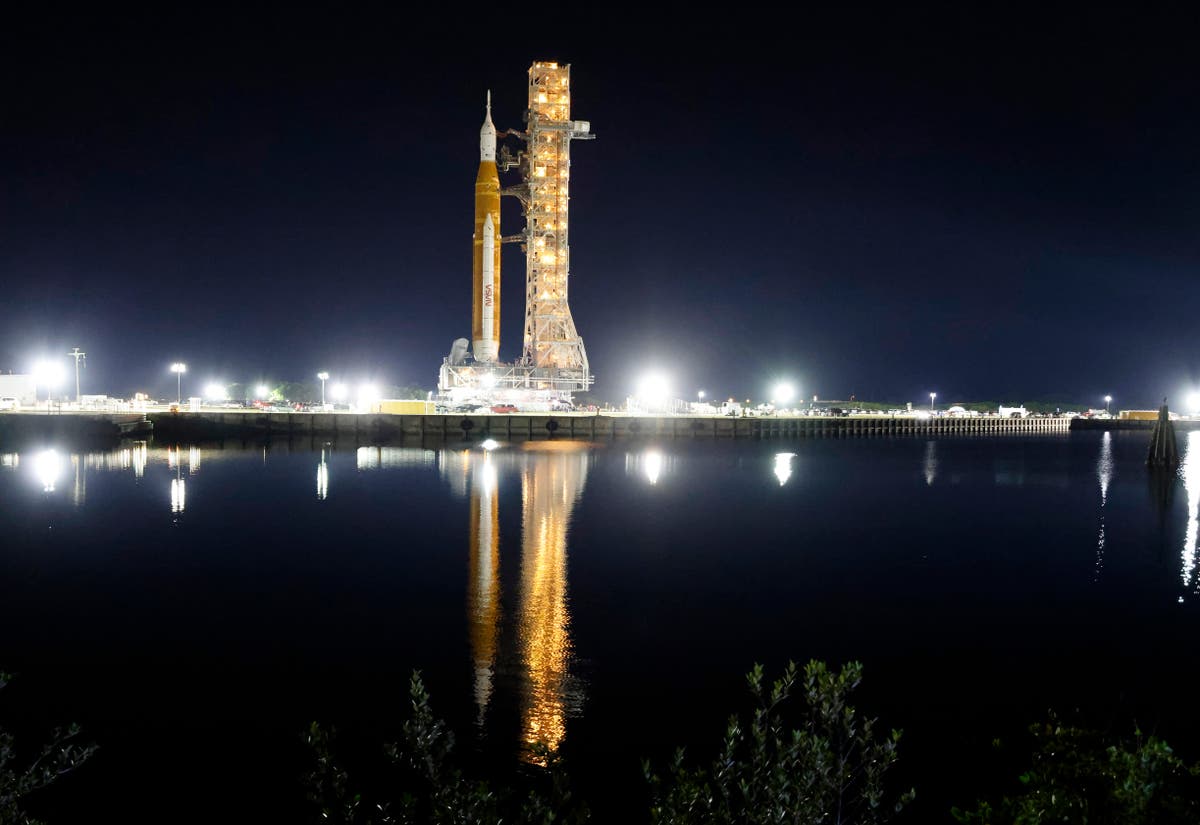Artemis 1: When will Nasa’s launch take place and what time?

Sign up to our free WhatsApp news alerts and daily briefing updates Sign up to our free daily WhatsApp news alerts Please enter a valid email address Please enter a valid email address SIGN UP I would like to be emailed about offers, events and updates from The Independent. Read our privacy notice Thanks for signing up to the
WhatsApp news alerts email {{ #verifyErrors }}{{ message }}{{ /verifyErrors }}{{ ^verifyErrors }}Something went wrong. Please try again later{{ /verifyErrors }}
Nasa is preparing to launch Artemis-1, a mission that will begin the space agency’s plan to return to the Moon.
The first test is going without a crew, and only around the Moon. But it will be a major test not only of the Space Launch System that will one day carry humans, but of the decades-long plan that Nasa has drafted for returning to our nearest neighbour.
Follow our live coverage and watch the live stream of Nasa’s Artemis launch here
It will be the result of months of preparation, years of design, and decades of work.
And it will all begin on Monday, 29 August, when the first launch window opens. At 8.33am local eastern time, or 1.33pm in the UK, the first launch window will open.
Nasa will have 120 minutes in which to fire up the rocket and send it into space. If it misses that window, it will have to delay the launch.
But if it misses that window then it has another set, on 2 September and 5 September.
It is likely that Nasa will use the first slot. The space agency has already said that it has a higher tolerance for risk than it would have if there was a crew on board the rocket – and so the only thing likely to put off the launch is terrible weather.
But nothing can ever be truly predicted with space, including weather and anything else besides. In January, for instance, SpaceX was forced to delay a launch just 33 seconds before it was due to take place, because a cruise ship sailed too close to the launchpad.
Once the rocket has left, it will spend 42 days in space, some of which will include time in the Moon’s orbit. it will then drift back down to Earth, splashing into the sea.
All of that process will test how the Space Launch System is able to blast off into space. The Orion capsule that will be the home for future astronauts will also be tested throughout the uncrewed journey.





